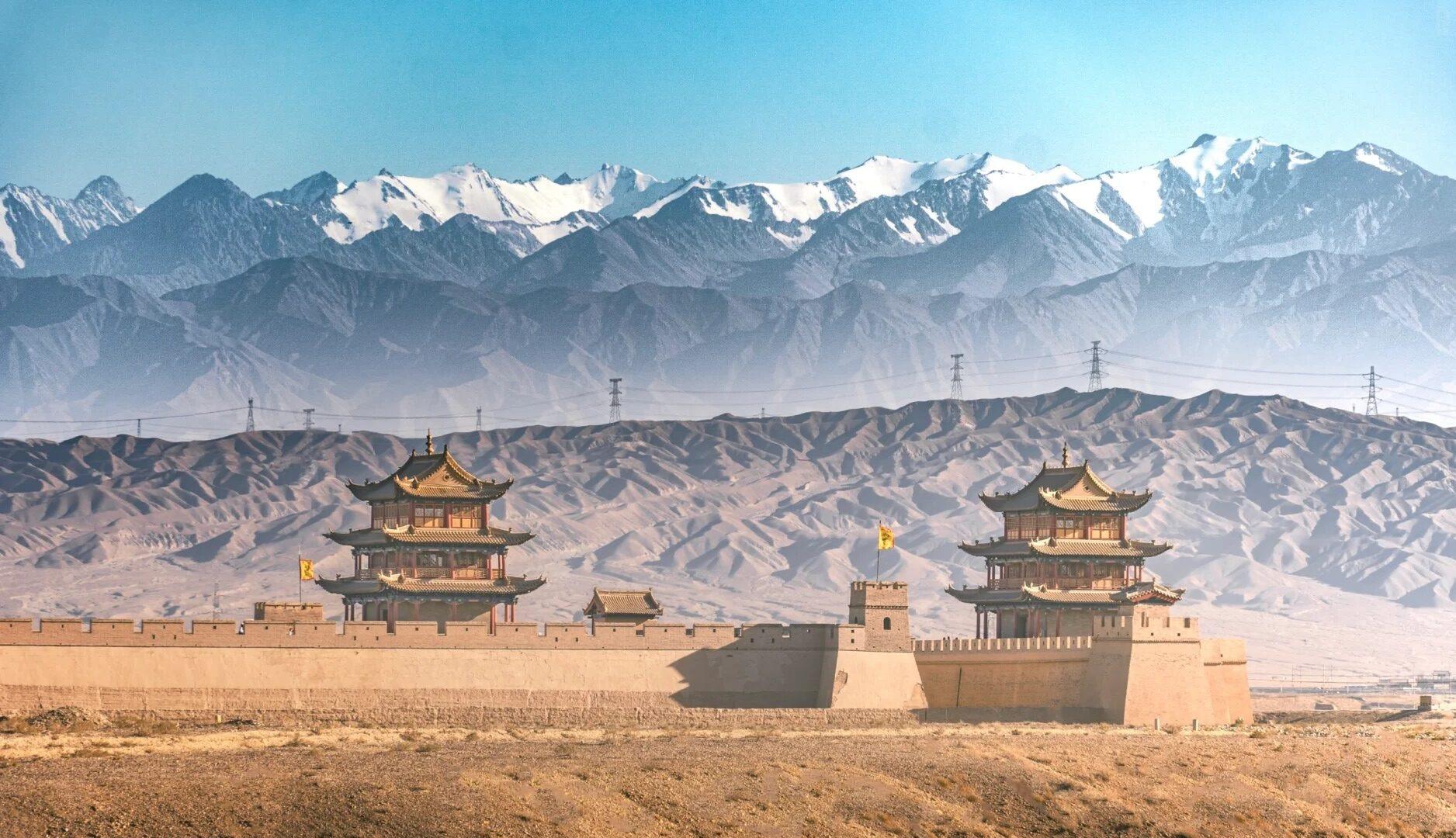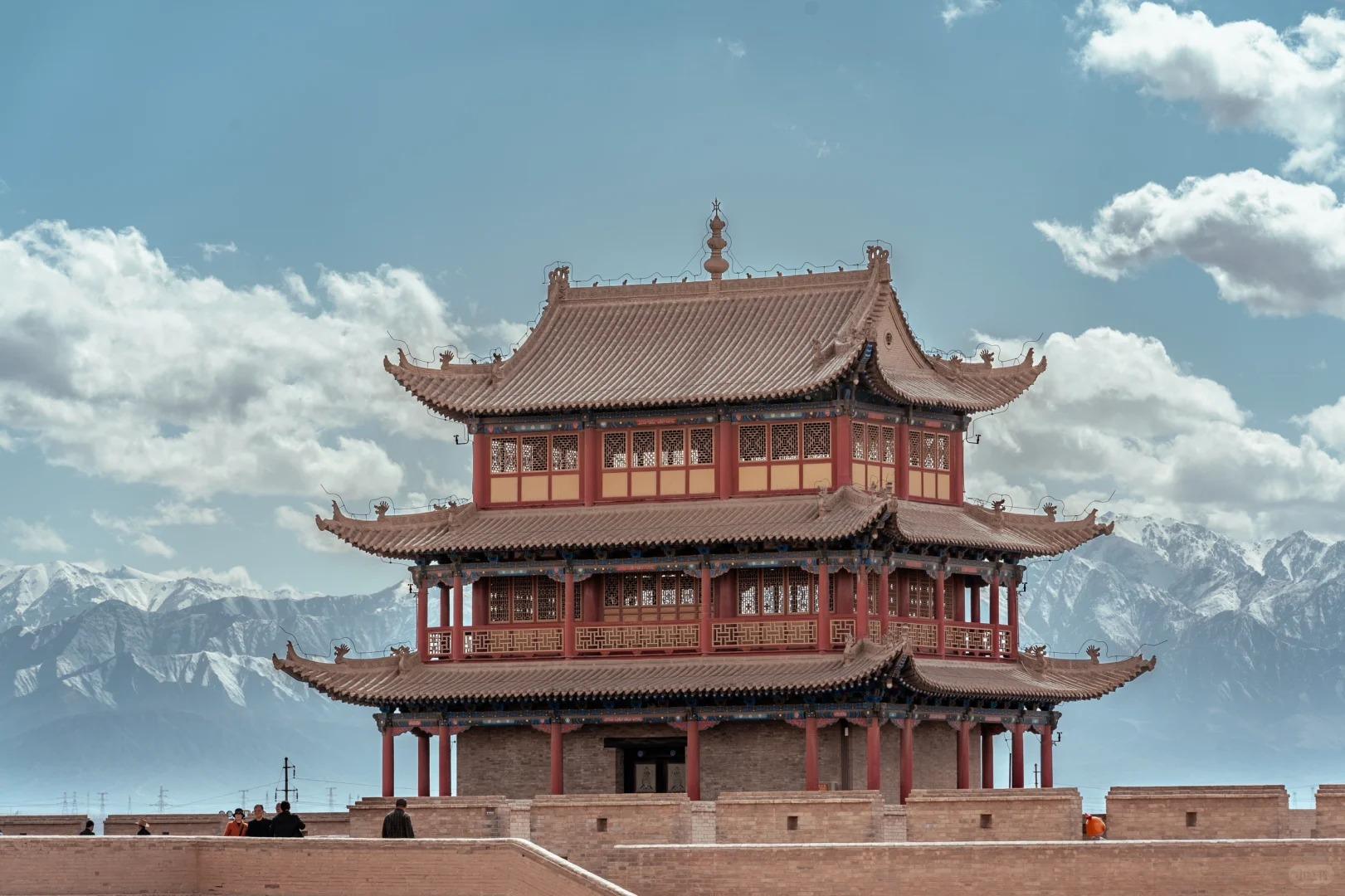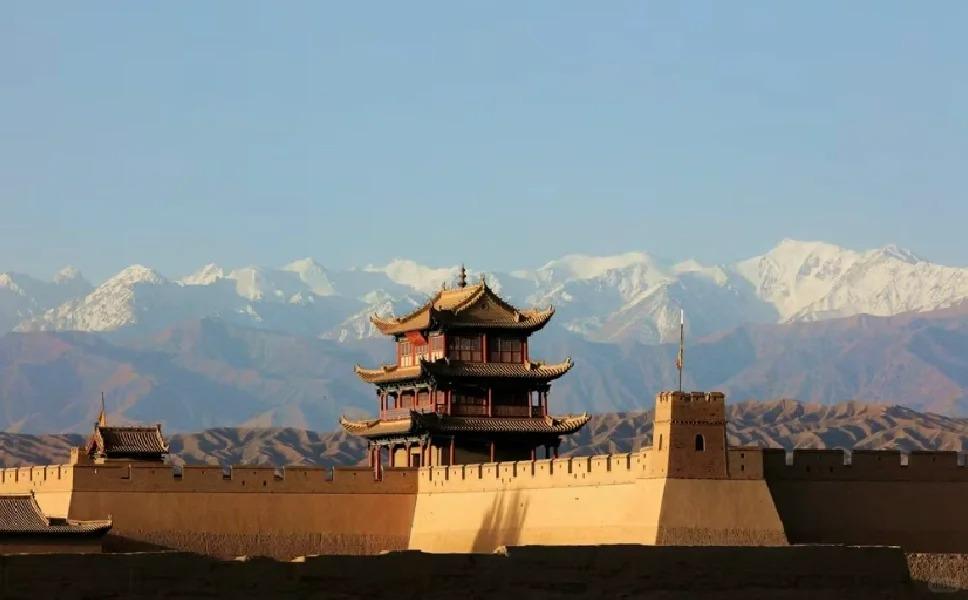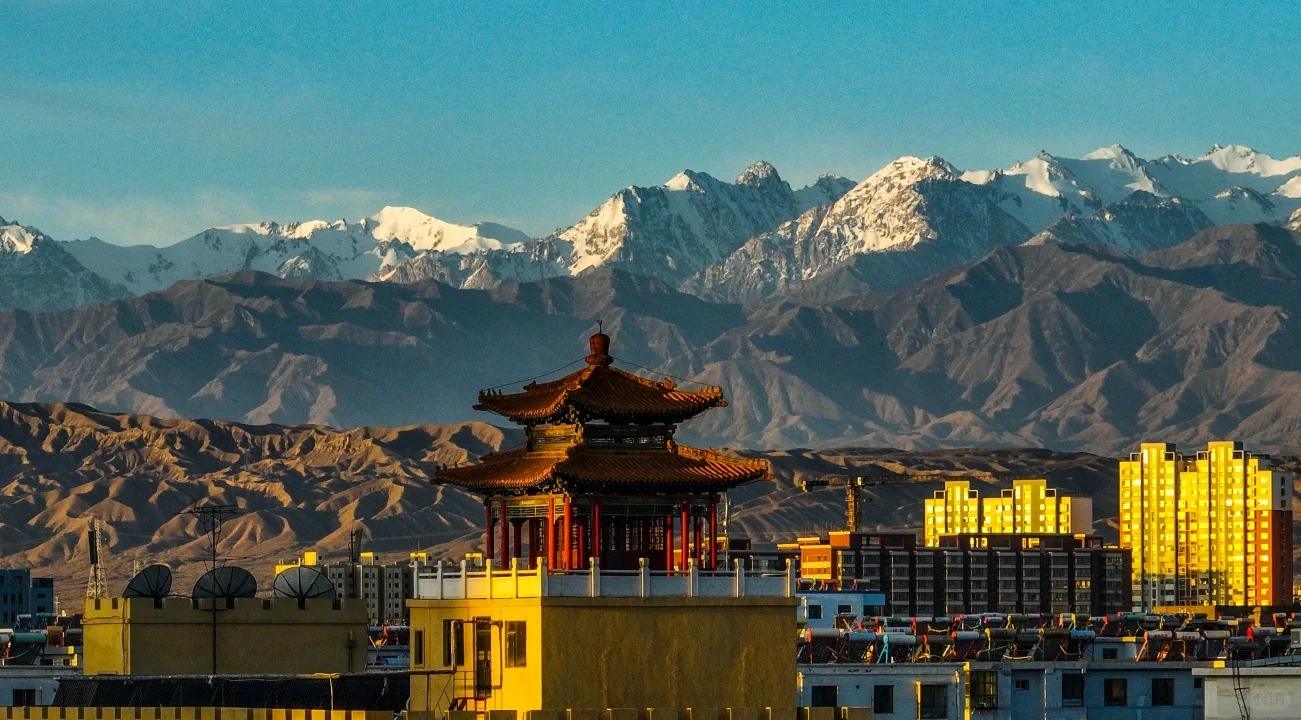Visiting Information
| Information | Details |
|---|---|
| Chinese Name | 嘉峪关 (Jiāyùguān) |
| Location and Address | Jiayuguan City, Gansu Province, China |
| Opening Time/Hours | 8:00 AM – 6:00 PM (May to October) 9:00 AM – 5:30 PM (November to April) |
| Entrance Fee | 120 CNY (March to November) 60 CNY (December to February) |
| How to Get There | By Bus: Take Bus 4, 5, or 6 from Jiayuguan City By Taxi: About 20 minutes drive from Jiayuguan City center (No metro service in Jiayuguan) |
| Best Time for Visit | May to October, especially September and October for pleasant weather |
| Contact Info | Phone: +86 937 6361600 Email: Not available |
Overview
Jiayuguan Pass, also known as the “First and Greatest Pass Under Heaven,” is the western terminus of the Ming Dynasty Great Wall. Located in Jiayuguan City, Gansu Province, China, it stands at the narrowest point of the Hexi Corridor, historically a crucial strategic location guarding the western entrance to China. The pass is renowned for its imposing fortress, intricate architecture, and the stark beauty of its desert surroundings. As a symbol of ancient Chinese military might and engineering prowess, Jiayuguan Pass attracts visitors from around the world, offering a glimpse into China’s rich history and the strategic importance of the Silk Road.
Historical Background
Jiayuguan Pass was constructed during the early Ming Dynasty, with its building starting in 1372 and completed in 1540. It served as a key military fortification and checkpoint along the ancient Silk Road, controlling the flow of people, goods, and ideas between China and Central Asia. The pass was not only a military stronghold but also a symbol of the Ming Dynasty’s power and the extent of Chinese civilization. Over the centuries, it witnessed numerous battles and played a crucial role in China’s defense against nomadic invasions from the west. The pass also gained cultural significance as the traditional “last stop” for those exiled from China, earning it the poetic name “the Gate of Sighs.” After the fall of the Ming Dynasty, Jiayuguan Pass gradually lost its military importance but retained its cultural and historical significance. In modern times, it has become a major tourist attraction and an important site for the study of Chinese military architecture and Great Wall history.

Architectural Features
- The Fortress: The main structure of Jiayuguan Pass is a large fortress built of rammed earth and brick. It features high walls, corner towers, and multiple gates, designed to withstand sieges and provide a commanding view of the surrounding landscape. The fortress is trapezoid-shaped, with an inner and outer city, showcasing the advanced military architecture of ancient China.
- The Great Wall: Jiayuguan marks the western end of the Ming Dynasty Great Wall. The wall extends from the pass in both directions, with watchtowers and beacon towers dotting its length. The section of the wall near Jiayuguan is well-preserved and offers visitors a chance to walk along its battlements.
- The Overhanging Great Wall: This unique section of the wall, known as “Xuanbi Great Wall” in Chinese, is built on a steep cliff face. It demonstrates the ingenuity of ancient Chinese engineers in adapting the wall’s construction to challenging terrain.
- The First Beacon Tower: Located about 7 kilometers southwest of the main pass, this tower marks the westernmost point of the Ming Great Wall. It served as an early warning system, using smoke signals to alert the main fortress of approaching dangers.
Cultural Importance
Jiayuguan Pass holds immense cultural significance in Chinese history and literature. It symbolizes the frontier between Chinese civilization and the outside world, embodying the concept of “Hua-Yi distinction” (the differentiation between Chinese and non-Chinese peoples). The pass features prominently in Chinese poetry and literature, often representing themes of exile, longing, and the vastness of the empire. Many legends and stories are associated with Jiayuguan, including the tale of the precise brick count during its construction, which adds to its mystique. The pass also played a crucial role in cultural exchange along the Silk Road, facilitating the flow of ideas, religions, and technologies between East and West. Today, Jiayuguan Pass continues to be a powerful symbol of Chinese heritage and a testament to the engineering and military achievements of ancient China.
Surrounding Attractions
- Wei-Jin Art Gallery: Located about 20 kilometers northeast of Jiayuguan Pass, this underground gallery contains over 1,000 carved brick murals from the Wei and Jin dynasties (220-420 AD). These murals provide invaluable insights into the daily life, customs, and beliefs of ancient Chinese society.
- Black Mountain: Situated about 8 kilometers north of Jiayuguan City, Black Mountain (Heishan) offers a stark contrast to the surrounding desert landscape. Its dark, jagged peaks provide a dramatic backdrop for photography and hiking opportunities.
- Jiayuguan Great Wall Museum: Located near the pass, this museum houses a collection of artifacts and exhibits related to the history of the Great Wall, particularly focusing on the western sections and Jiayuguan Pass itself.
- The First Pier of the Great Wall: This is the westernmost end of the Ming Dynasty Great Wall, located about 8 kilometers northwest of Jiayuguan Pass. It offers a unique perspective on the termination point of this monumental structure.

Photography Opportunities
- Panoramic Views: The top of the fortress provides sweeping views of the surrounding landscape, including the Gobi Desert and distant mountains. This vantage point offers excellent opportunities for panoramic shots, especially during sunrise or sunset when the light casts long shadows across the terrain.
- Architectural Details: The intricate architecture of the pass, including its gates, towers, and wall sections, provides numerous opportunities for close-up and detail shots. The textures of the ancient brickwork and the geometric patterns of the fortress design are particularly photogenic.
- Desert Landscapes: The stark beauty of the surrounding Gobi Desert, with its shifting sand dunes and rugged terrain, offers a dramatic backdrop for landscape photography. The contrast between the ancient fortifications and the timeless desert creates compelling visual narratives.
- Cultural Performances: Occasional historical reenactments and cultural performances at the pass provide opportunities to capture colorful images of traditional costumes and activities, adding a dynamic element to photographs of this historical site.
Modern Importance
- Cultural Heritage Preservation: Jiayuguan Pass serves as a prime example of China’s efforts to preserve its cultural heritage. The ongoing conservation and restoration work at the site not only maintains this historical treasure but also provides valuable insights into ancient construction techniques and materials.
- Tourism and Economic Development: As a major tourist attraction, Jiayuguan Pass plays a significant role in the local economy of Jiayuguan City and the broader Gansu Province. It attracts both domestic and international visitors, contributing to the development of tourism infrastructure and services in the region.
- Educational Resource: The pass serves as an important educational resource, offering visitors and researchers a tangible connection to China’s past. It provides a platform for learning about Chinese history, military strategy, and the cultural significance of the Great Wall.
- Symbol of National Identity: In modern China, Jiayuguan Pass continues to be a powerful symbol of national identity and historical continuity. It represents the ingenuity, strength, and endurance of Chinese civilization, reinforcing cultural pride and patriotism.

FAQ
- What is Jiayuguan Pass famous for?
Jiayuguan Pass is famous for being the western terminus of the Ming Dynasty Great Wall. It’s known as the “First and Greatest Pass Under Heaven” and is renowned for its imposing fortress, strategic location guarding the Hexi Corridor, and its role in ancient Chinese military history and the Silk Road trade. - What’s inside Jiayuguan Pass?
Inside Jiayuguan Pass, visitors can explore:
1. The main fortress with its gates, towers, and walls
2. The Great Wall sections extending from the pass
3. The Overhanging Great Wall (Xuanbi Great Wall)
4. Historical exhibitions and artifacts
5. Scenic viewpoints offering panoramic vistas of the surrounding landscape
6. Cultural performances and historical reenactments (on occasion) - Is Jiayuguan Pass free?
No, Jiayuguan Pass is not free. The entrance fee is 120 CNY from March to November and 60 CNY from December to February. - Is Jiayuguan Pass worth visiting?
Yes, Jiayuguan Pass is definitely worth visiting. It offers a unique glimpse into China’s ancient military architecture, provides stunning views of the Gobi Desert, and holds significant historical and cultural importance. Its well-preserved structures and strategic location make it a must-see for history enthusiasts and those interested in the Great Wall. - What to do in Jiayuguan Pass?
At Jiayuguan Pass, you can:
1. Explore the fortress and climb its walls for panoramic views
2. Walk along sections of the Great Wall
3. Visit the Overhanging Great Wall
4. Learn about the pass’s history through exhibitions and guided tours
5. Photograph the unique desert landscape and architectural features
6. Visit nearby attractions like the First Beacon Tower
7. Witness cultural performances (if available)
8. Explore the surrounding Gobi Desert landscape
9. Visit the nearby Great Wall Museum
10. Experience traditional archery demonstrations (seasonally available) - How do I get to Jiayuguan Pass in the local city?
From Jiayuguan City, you can reach Jiayuguan Pass by:
1. Bus: Take Bus 4, 5, or 6 from the city center to Jiayuguan Pass
2. Taxi: It’s about a 20-minute drive from Jiayuguan City center
3. Organized tour: Many local travel agencies offer transportation as part of their tour packages
Note that Jiayuguan does not have a metro system. - How to visit Jiayuguan Pass?
To visit Jiayuguan Pass:
1. Plan to spend at least half a day to explore the main attractions
2. Purchase tickets at the entrance or through your tour operator
3. Consider hiring a guide for a more in-depth understanding of the site’s history
4. Wear comfortable walking shoes and bring sun protection
5. Start early in the morning to avoid crowds and heat (especially in summer)
6. Bring water and snacks, as facilities inside may be limited
7. Check the weather forecast and dress appropriately, as the area can be windy and have extreme temperatures
8. Consider visiting during weekdays to avoid peak crowds
9. Combine your visit with nearby attractions like the Wei-Jin Art Gallery or the First Beacon Tower for a full day trip
10. Respect the historical site and follow all posted rules and regulations



